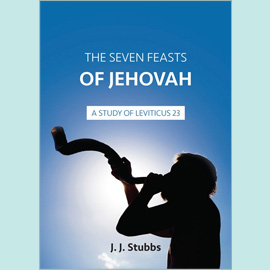Dear John,
I hope you have been able to follow what I have tried to say over the past few letters. Like many things, however, Bible study (as they put it in Scotland) is "better felt than telt": you really begin to grasp what it is all about as you do it. There can be no substitute for hands-on experience. The more you dig into the Word the more you will feel at home with it. It is rather like studying poetry. I tell my students that they will only truly understand one poem after they have read many, which does not always cheer them up greatly because it implies hard work, but there is no gain without pain!
After our brief glance at Ephesians (a sample letter), we can move on to the study of New Testament narrative. This may seem initially more difficult than a letter for the simple reason that it does not communicate doctrine in a direct manner. Narrative, you see, means telling a story, yet that story can include many other things (songs, dialogue, scenic description). The first five books of the New Testament consist of narrative: four accounts of the earthly activities of the Lord Jesus Christ and one survey of early church history up to Paul’s first Roman imprisonment. We shall focus for the moment on one of the Gospels. Now, the four Gospels are packed with an amazing variety of literary forms, which makes them among the most readable and enjoyable of Bible books. They include, for example, genealogy (Mt 1; Lk 3), poetry (Lk 1.68-79), sermons (Mt 5-7), miracles (Mk 2.1-12), parables (Lk 15), personal interviews (Jn 3), racy dialogue (Jn 9), fast-moving action (Jn 18), and prophetic overviews (Mt 24-25).
As I have already said, the immediate trouble with narrative is that it does not teach lessons in a direct and propositional manner. It is not a series of doctrinal statements or practical exhortations. Rather, it provides an inspired account of God’s ways in human history. Paul’s letter to the Ephesians, for example, tells us in no uncertain terms what to believe and how to behave, but Luke’s Gospel is a selective historical account of the earthly activities of the Saviour, designed to foster confidence in those who have trusted Him for salvation (Lk 1.1-4). Of course, any information about the Lord Jesus will strengthen our faith in Him, increase our love for Him, and influence our lives, but in a narrative the information is communicated without any attempt at direct application. Each reader has to draw out the implications of a passage for himself.
This will all, I hope, make sense as we get into some examples, so just read through Lk 4.16-30. First, put the paragraph in its context. Never forget the contextual location of the section of narrative you are studying. Bible chapters and verses are not free-floating gobbets of information to be interpreted or used as the fancy takes you, but are always locked into a precise setting (involving a specific time, place, people, purpose). Where does this paragraph stand? Note what has preceded it. Luke’s unique and remarkable infancy narratives (Lk 1-2) are followed by his account of the Lord’s baptism, a genealogy tracing Him back to Adam (Lk 3), and a summary of His battle with Satan in the wilderness (Lk 4.1-13). All this sets the scene for the start of a public ministry of healing and teaching in Israel (4.14-15). You see, Luke’s Gospel presents Christ as the ideal Man engaged in service to men. Our paragraph focuses in detail upon a specific encounter between the Lord Jesus and His own townsfolk in Nazareth. How would they react to Him?
As you read the section, be attentive to the factual information it provides. It may help you to list the things it tells you (i) about the Saviour, (ii) about the Scriptures, (iii) about the people of Nazareth (who stand as a representative sample of humanity in all its ignorance of and rebellion against God). What Paul teaches about human beings in Ephesians (2.1-3; 4.18) is here demonstrated in action. In this remarkably plain, unvarnished record of one particular visit to the local synagogue (4.16) we meet with a public reading from the Bible (4.17-19), a message based on that reading (4.20-27), and the response of the congregation (4.28-30). Observe how very down-to-earth it all is – there is nothing in the language to suggest that we are in the imaginary fairy-tale world of myth or legend. Luke, like the rest of Scripture, deals with historical "certainty" (Lk 1.4), not with "cunningly devised fables" (2 Pet 1.16). But although this is reliable history it is far more than mere history. Remember that no factual data is recorded in God’s Word without a spiritual purpose: it is there to instruct us in godliness (2 Tim 3.16-17). Therefore everything the Lord Jesus Christ does and says is a disclosure of His wonderful character; while the behaviour of the Nazarenes is a testimony to the nature of man (for, as I said, Israel is God’s test-tube specimen of the entire human race).
After establishing context and collecting data comes the final step: practical illustration. That is to say, the pieces of information you have gathered from the passage become the basis for spiritual lessons. This is the unique value of narrative. Bible history books constitute an inspired collection of sermon illustrations, practical examples of doctrinal truth in action. Here are three examples. The writer to the Hebrews encourages his readers to meet regularly as a company of believers (Heb 10.25), but Luke actually shows us the Lord Jesus faithfully attending His local synagogue. Whereas Romans 1.2 informs us that the Scriptures are "holy" (that is, set apart from all else and to be treated accordingly), the Lord Jesus illustrates this practically in His reverent handling of a reading from the prophet Isaiah. The very way He used the Old Testament is a model of how to approach God’s Word – with due respect and complete confidence. Paul tells us that the Lord Jesus must have the pre-eminence in everything (Col 1.18); Luke illustrates it by describing a synagogue service where every eye was fixed on Christ (Lk 4.20). Although my first example is set in the dispensation of law under which the Saviour lived (there were of course no New Testament churches during the period of His earthly ministry), and my last is ironic in that the congregation’s interest in Christ was not one of devoted worship but mere intellectual curiosity which soon turned into violent anger, I hope you can see what I mean. The idea is simply this: one-off events, locked into a space/time context, can be read as demonstrations of timeless spiritual principles.
To kick-start your own study, here are a few suggestions. First, note the Lord’s genuine humanity. He who "came down from heaven" (Jn 6.38) was "brought up" (Lk 4.16) as a man. Second, the Lord’s residence in Nazareth (disdained by most orthodox Jews because it was part of Galilee, adjacent to Gentile territory) is a token of His humility (Mt 4.15; Jn 1.46). He who made all things and has the right to all honour condescended to live in a down-market area! Lesson: pride and arrogance should never mark those who belong to such a lowly Master (Prov 16.19; James 4.6). Third, the Lord’s easy familiarity with the Old Testament teaches the importance of knowing our way around the Word (2 Tim 3.15). Just as a young man in love will (so they tell me) pore over every tiny detail of his girl friend’s letters again and again, so the believer must be well acquainted with the whole of Scripture. Fourth, the quotation from Isaiah 61 testifies to the harmonious cooperation of each person of the Trinity in reaching out to helpless men: "The Spirit [the Holy Spirit] of the Lord [in context, the Father] is upon me [Jehovah’s perfect servant, the Son]". Ephesians teaches that salvation is the work of Father, Son and Spirit (Eph 1.3-14): in citing Isaiah the Lord Jesus, Himself only recently publicly anointed by the Holy Spirit and announced by the Father at His baptism in the Jordan, endorsed this truth (Lk 3.21-22). Fifth, the quotation itself is a wonderful digest of His gracious ministry on earth, preaching good news, healing, rescuing, enlightening, liberating (4.18-19). Peter says that He "went about doing good" (Acts 10.38), but here is a detailed summary of what that involved. Sixth, the quotation is a direct affirmation of the Lord’s identity as long-promised Messiah: "He hath anointed me" (4.18). Messiah, which simply means "the anointed one", is equivalent to the New Testament title Christ. Seventh, the statement, "this day is this scripture fulfilled" (4.21), announced the implementation of a prediction written some 700 years before, thus underlining the infallibility of God’s Word. What God says will be, will be, for He alone knows the end from the beginning (Is 46.10). Eighth, Christ indicated that He personally was the theme of the Old Testament (Lk 24.27,44; Jn 5.46): He is the source, subject and centre of the Word. Ninth, here is help in prophetic interpretation. The Lord pronounced the extract He read "fulfilled", but "closed the book" (4.20) at that point and significantly failed to read on about "the day of vengeance of our God" (Is 61.2). This marks the difference between His first coming in grace and His future coming in solemn judgment. Tenth, (and this again involves checking Isaiah 61.1-2), God’s mercy extends for a "year", while His vengeance is restricted to a "day". How longsuffering is our God (2 Pet 3.9)!
What we learn about the Son of God is always designed to stimulate adoration. But because He is also the perfect Man and the example of everything that men ought to be, He is also a model for our behaviour. Narrative, you see, is full of dramatised doctrine and practical lessons put into action.
So keep on going. Bible study is an investment for eternity and will richly repay all the effort you put into it. Next time, God willing, we shall look at some examples of Old Testament narrative.
Lots of love in Christ Jesus
David
To be continued.









